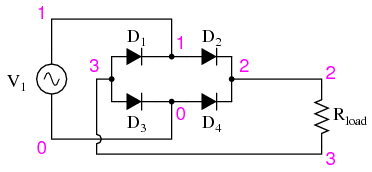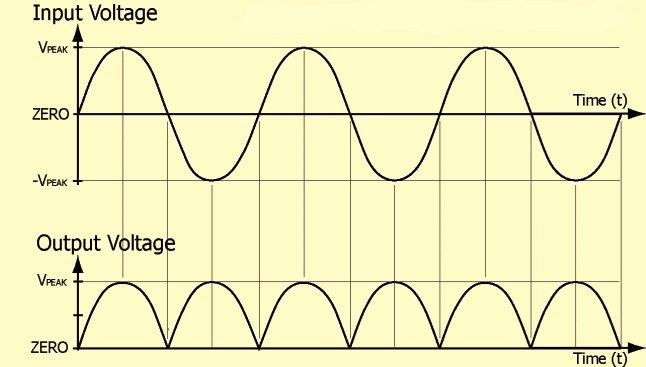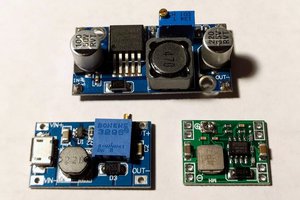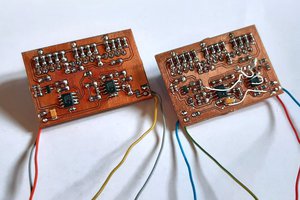Things we need...
- General Purpose Diode x 4
- 100 uF Capacitor x 1
- Linear Voltage Regulator LM7805 x 1
- Step down transformer x 1
- 10 nF Capacitor x 1
This project has been sponsored by LCSC.com. LCSC has over 700,000 customers and over 310 employees with around $150 Million in sales. LCSC distributes over 150,000 products ranging from semiconductors to resistors, capacitors, diodes, inductors, connectors, transistors, sensors, providing design-chain services with EasyEDA too. LCSC has DHL, Fedex, EMS, USPS and other logistics partners on site for swift delivery of consignments to 200+ countries. Click here and get $8 off now.
Step 1: Step Down AC Voltage
The mains supply which comes to our house is usually 220V-240V. Firstly, we need to step-down the voltage to 12V using from 220V using a 12-0-12 step-down transformer. In the transformer, there are primary and secondary coils which step up or step down the voltage according to the no of turn in the coils.
Selection of proper transformer is very important. The current rating of a transformer depends upon the requirement of the load circuit. Mind that the voltage rating should be more than the required voltage. Means if we need 5V DC, the transformer should be at least of 7V, because of voltage regulator IC 7805 drops about 2V for the voltage regulation.
Step 2: Rectification
Rectification is the process of removing the negative part of the AC and only give positive part of AC. Thus, it produces the pulsating DC. This can be achieved using 4 P-N junction diodes. Diodes are unidirectional i.e. they only allow current to flow in one direction. In first half cycle of AC, diode D2 & D3 are forward biased and D1 and D4 are reversed biased, and in the second half cycle (negative half) Diode D1 and D4 are forward biased and D2 and D3 are reversed biased. This Combination converts the negative half cycle into positive.


Step 3: Filtration
The output after the Rectification is not a proper DC, it is oscillation output and has a very high ripple factor. We don’t need that pulsating output, for this we use Capacitor. Capacitor charge till the waveform goes to its peak and discharge into Load circuit when waveform goes low. So when output is going low, capacitor maintains the proper voltage supply into the Load circuit, hence creating the DC. Now how the value of this filter capacitor should be calculated. Here is the formulae:
C = I*t/V
where, C = capacitance to be calculated; I = Max output current (let’s say 1000mA or 1A); t = 10ms,
We will get wave of 100Hz frequency after converting 50Hz AC into DC, through full wave bridge rectifier. As the negative part of the pulse is converted into positive, one pulse will be counted two.
So the Time period(t) will be:
t = 1/100 = .01 second = 10ms.
V = Peak voltage – voltage given to voltage regulator IC (+2 more than rated means 5+2=7)
12-0-12 is the RMS value of transforms so peak voltage is:
Vrms * 1.414 = 12 * 1.414 = 16.968V
Now 1.4v will be dropped on 2 diodes (0.7 per diode) as 2 will be forward biased for half wave.
So, 16.968 – 1.4 = 15.568V
When capacitor discharges into load circuit, it must provide 7v to 7805 IC to work so finally V is:
V = 15.568 – 7 = 8.568V
So now, C = I*t/V
C = 1000mA * 10ms / 8.568
= 1 * .01 / 8.568
= 0.001167134 ~ 100uF
Step 4: Voltage Regulation
A voltage regulator IC 7805 is used to provide a regulated 5v DC. Input voltage should be 2V more than the rated output voltage for proper working of IC, means at least 7v is needed, although it can operate in input voltage range of 7-20V. Voltage regulators have all the circuitry inside it to provide a proper regulated DC. Capacitor of 0.01uF should be connected to the output of the 7805 to eliminate the noise, produced by transient changes in voltage.



 256byteram
256byteram

 mircemk
mircemk